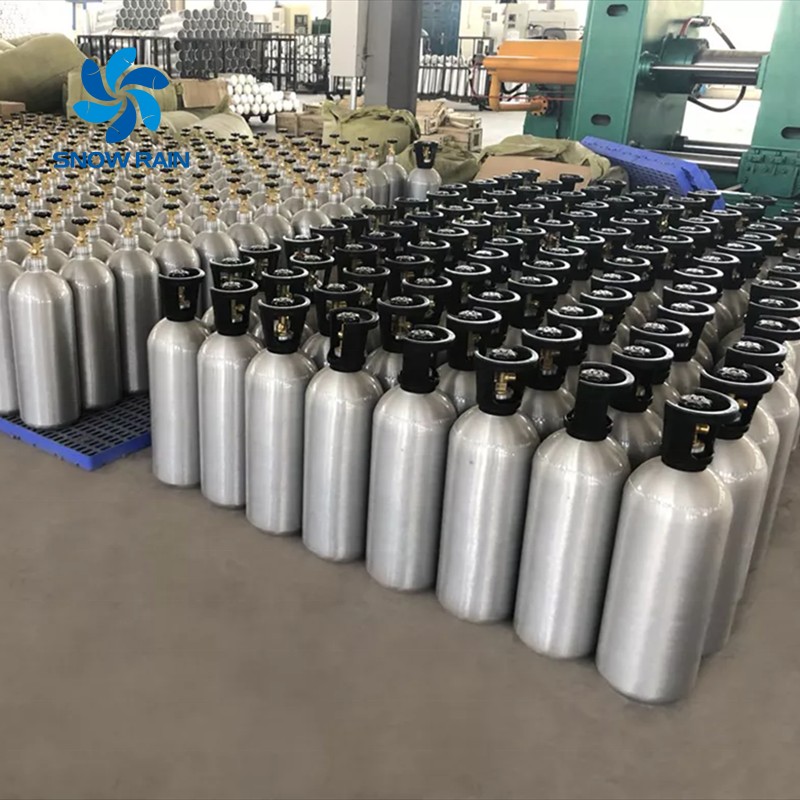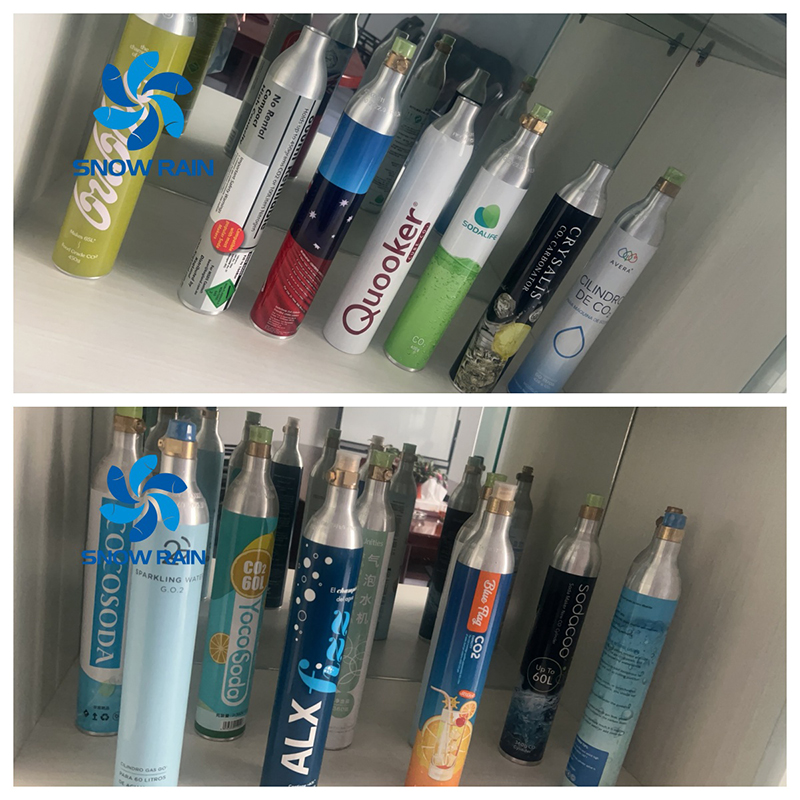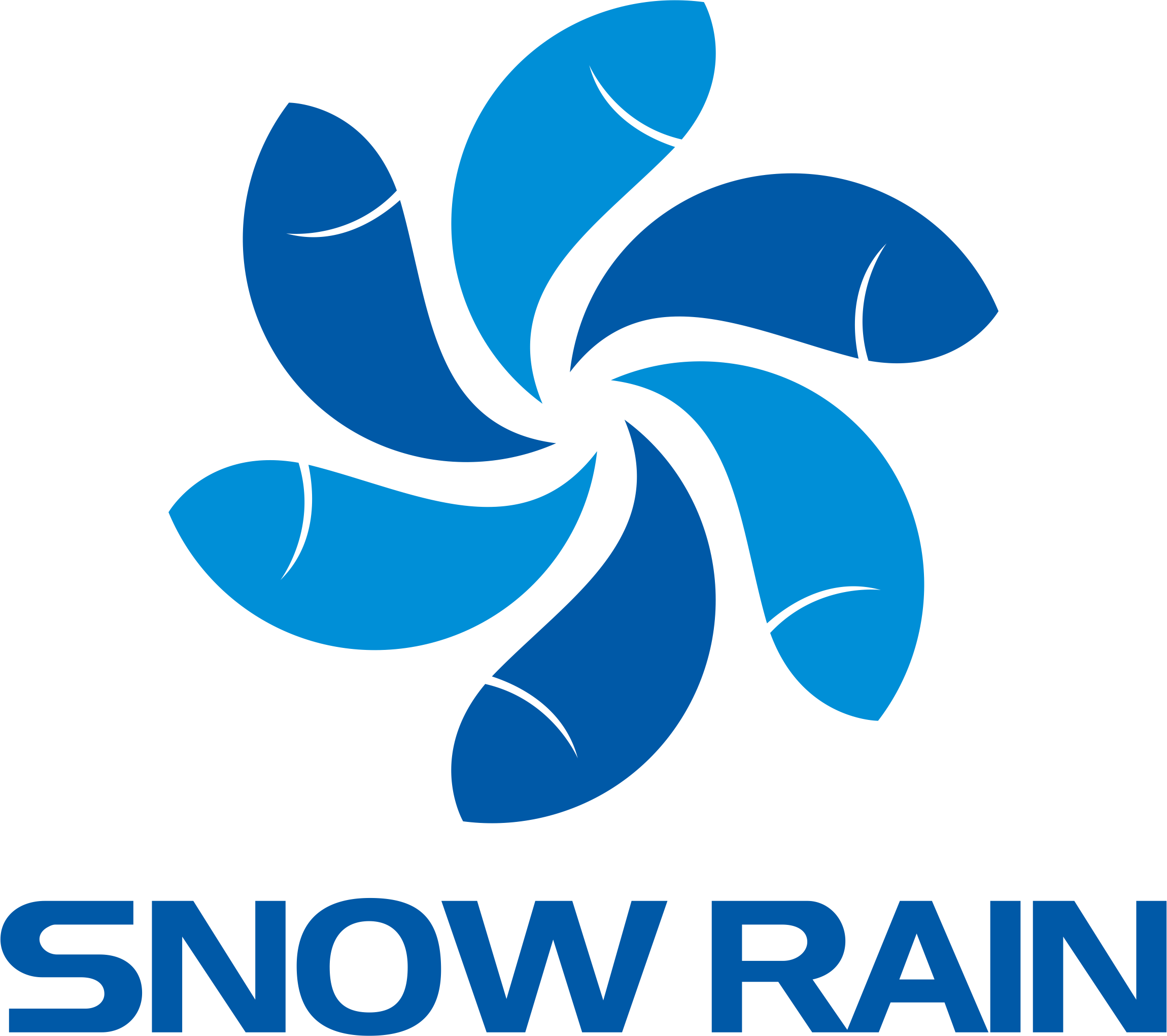Main International Standards for Food Grade Carbon Dioxide Cylinders
CO₂ is an indispensable gas in the food and beverage industry. From the bubbles in carbonated beverages to preserving beer, to packaging coffee beans and transporting meat through the cold chain, food-grade CO₂ plays a vital role. However, the quality and safety of CO₂ gas are directly related to food hygiene and consumer health.
As the global food industry's safety and compliance requirements continue to rise, the co2 gas cylinder standard system is also becoming increasingly sophisticated. Only by truly understanding and adhering to these international standards can buyers, distributors, and end-users ensure a competitive edge in the market.
Basic Requirements for CO2 Gas Cylinder
A CO2 gas cylinder requires more than just "being able to hold gas." Globally, relevant standards typically address two key aspects:
Gas Purity Requirements:
Food-grade CO₂ generally requires a purity of ≥99.9%. In addition to high purity requirements, impurity levels must also be strictly controlled. For example:
Carbon monoxide (CO): must not exceed 10 ppm due to its toxicity.
Hydrogen sulfide (H₂S): must not exceed 0.1 ppm to avoid odor and health hazards.
Aromatic hydrocarbons such as benzene and toluene: typically required to be below 0.02 ppm.
These limits are typically set by the Compressed Gas Association (CGA) and the European Industrial Gases Association (EIGA).
CO2 Gas Cylinder Safety Requirements:
The CO2 gas cylinder itself must undergo rigorous quality testing:
Pressure testing: ensures that co2 gas cylinder will not burst under high pressure.
Fatigue testing: verifies the durability of co2 gas cylinder during repeated refilling.
Explosion-proof testing: simulates extreme conditions to ensure that co2 gas cylinder cylinders will not pose a danger even under abnormal conditions.
It's common to think that "as long as the gas is qualified, it's fine." However, if the co2 gas cylinder device storing carbon dioxide gas doesn't meet international safety standards, it can still pose a serious safety hazard. Therefore, be sure to choose an co2 gas cylinder made by a reputable, internationally certified manufacturer. Snowrain is a great choice.


Classification of Major International Standards
The standard system encompassing co2 gas cylinder is complex and extensive, primarily including ISO international standards, European standards, American standards, and national standards from other regions.
ISO International Standards
The ISO 9809 series: Applies to seamless steel gas cylinders, regulating the design, manufacture, and testing of gas cylinders.
ISO 11118:2015: Specific safety requirements for disposable steel cylinders to prevent low-quality containers from entering the market.
ISO 22000:2018: Food safety management system standard. While not specifically for gas cylinders, it indirectly provides requirements for gas containers that come into contact with food.
Snowrain's co2 gas cylinder is ISO certified, so you can buy it with confidence.
European Standards (EN):
EN 1089: Specifies the color coding of gas cylinders; for example, co2 gas cylinder is often distinguished by its gray-green color.
EN 16723: Specifies the contaminant content in gases to prevent impurities from entering the food chain.
US Standards:
CGA G-6.2: Defines the purity standards for food-grade CO₂ and lists detailed impurity limits. FDA (21 CFR §184.1240): Lists CO₂ as a food additive, clarifying its safety requirements for food use.
Other regional standards:
EIGA Doc 70/17: A CO₂ quality standard specifically developed for the beverage and food industries, widely adopted by European breweries.
China GB 19239-2019: Specifies purity standards for carbon dioxide as a food additive, such as ≥ 99.9% purity, with strict control of impurities.
Together, these standards form a multi-layered global safety system, ensuring the safe and reliable entry of co2 gas cylinder products into the market.

In which industries can co2 gas cylinder be used?
CO2 gas cylinder is used across almost the entire food and beverage industry chain:
Beverage Industry: In carbonated beverages, CO₂ not only enhances taste but also inhibits bacterial growth. For example, Coca-Cola and PepsiCo both have strict CO₂ supplier audit systems. In addition to these larger beverage companies, Snowrain has established long-term partnerships with many beverage manufacturers, providing them with a stable supply of co2 gas cylinder.
Beer Industry: CO₂ is used during the fermentation and packaging stages of beer to prevent oxidation and maintain flavor stability.
Cold Chain Transportation: Dry ice (solid CO₂) is widely used in the cold chain, especially for cross-border transportation of frozen foods and fast food.
Modified Atmosphere Packaging (MAP): Adding CO₂ to meat, cheese, and baked goods can significantly extend shelf life.
What are the advantages of co2 gas cylinder compared to industrial-grade CO₂?
Quality Assurance: Avoids heavy metals and harmful impurities.
Compliance: Helps companies successfully pass FDA or EU food safety audits.
Cost optimization: Reduce losses due to food contamination or product recalls.
Latest Trends and Market Outlook for the co2 gas cylinder Industry
Environmental Protection and Green Manufacturing: Many companies are currently developing aluminum alloy gas cylinders and lightweight steel cylinders to reduce carbon emissions during manufacturing and transportation.
Digital Traceability: The EU market is promoting full traceability of the CO₂ supply chain, ensuring that every cylinder of gas can be traced back to the production batch.
Renewable CO₂ Sources: With the development of carbon capture and contamination (CCUS), some companies are beginning to use renewable energy to capture CO₂ for use in filling food-grade gas cylinders, reducing reliance on fossil fuels.
Convergence of International Standards: ISO, EN, and FDA requirements may converge further in the future to facilitate global trade and cross-border circulation.
What precautions should be taken when using co2 gas cylinder?
Procurement: Be sure to confirm whether the supplier is ISO or FDA certified and whether the gas cylinders are marked with the EN 1089 mark.
Transportation and Storage: Avoid direct sunlight and high temperatures. Store gas cylinders upright with the valve facing upward, and check the pressure regularly.
Operational Precautions: Use food-grade valves and piping when connecting equipment to prevent oil and other impurities from entering the gas cylinders.
Common mistake: Using industrial CO₂ as food CO₂ is a common misconception among many small and medium-sized enterprises and can lead to food safety incidents.
Conclusion
CO2 gas cylinder is more than just a storage tool; it's a core link in the food safety chain. Adhering to international standards such as ISO, EN, CGA, and FDA not only ensures food and beverage safety but also helps companies gain market recognition and consumer trust. As a leading company in the gas cylinder industry, Snowrain manufactures a wide range of CO2 gas cylinder products that have passed various certifications and can be exported with confidence to numerous countries and regions worldwide.
With snowrain: Your CO2 gas cylinder Manufacturer
Choose snowrain as your long-term partner and experience the charm of co2 gas cylinder. If you're looking for co2 gas cylinder that meets international standards, please contact snow@sysnowrain.com. Snowrain will provide you with the best solutions.
References:
ISO 9809-1:2019 — Gas cylinders — Refillable seamless steel gas cylinders — Design, construction and testing.
FDA 21 CFR §184.1240 — Carbon dioxide.
CGA G-6.2 — Commodity Specification for Carbon Dioxide.
EIGA Doc 70/17 — Carbon Dioxide Food and Beverage Grade Quality Standards.
